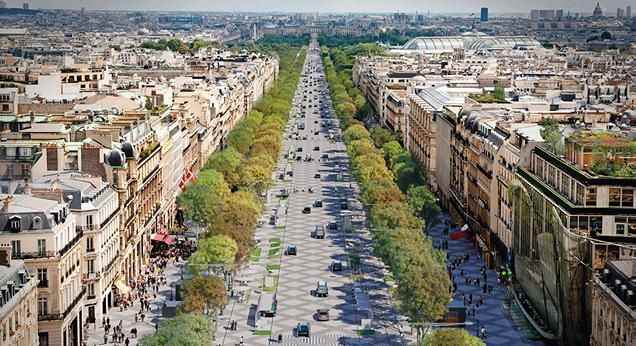Too many tourists, too much pollution, too much insecurity… As early as the summer of 2018, the Champs-Élysées Committee took up the problem on its own. “The avenue has not been renovated for thirty years. Its sidewalks and pavement are damaged. It is disconnected from digital innovations. The gardens are poorly maintained. The signs are out of step with the architecture”, lists Marc-Antoine Jamet, its president.
A situation that is all the more intolerable as the surrounding neighborhoods evolve, such as that of Porte Maillot. But the work is a matter for the public authorities. “We had two reasons to wake up the city of Paris. The arrival of the Olympic Games and good economic health. There is less than 7% commercial vacancy”, continues MarcAntoine Jamet.
A study was then entrusted to the architect and urban planner Philippe Chiambaretta. “Before the Covid, the question of the desirability of the city was already raised. If the district becomes sustainable and inclusive, the image reflects on it”, underlines the latter. He therefore set about erasing “this hyperdense and mineral urban highway”, reducing the place of the car and reinventing the gardens. “They are three times larger than Parc Monceau but five times less crowded,” laments Edouard Lefebvre, director general of the Champs-Elysées Committee.
Nearly 5,000 square meters of planted mineral space
The idea convinces. The municipality orders a project. “You have to see the city as a metabolism and the Champs-Élysées as the patient zero of the city of tomorrow”, explains Philippe Chiambaretta. The result is a tree-lined vision, which runs from the Louvre to La Défense. The idea is adopted. Her name ? “Re-enchanting the Champs-Elysées”. By 2024, sidewalks and terraces will be repaired and embellished through better harmonization of colors and materials. Place de l’Etoile, the central ring will be widened while retaining eight circulation axes. Nearly 5,000 square meters of mineral space will be planted and 7,700 square meters of roads transformed into a garden.
After the Olympic Games, the transformation will extend to avenues Montaigne, de Marigny and de la Grande-Armée. Connections to the Seine are planned, if the new urban study is validated by the State services (Bâtiments de France, Ministry of Culture, prefecture, etc.). In the meantime, this “project-manifesto” by Chiambaretta is already inspiring New York, Seoul and Singapore.
